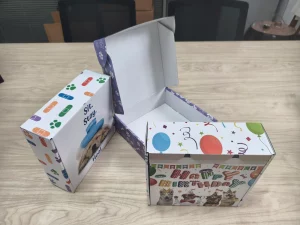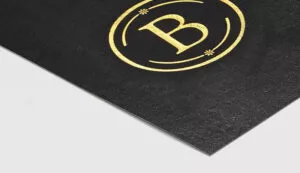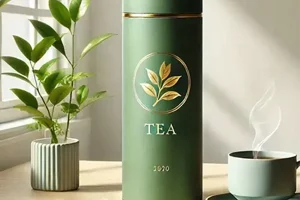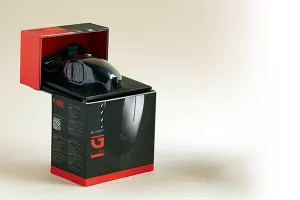I often worry that bulky or heavy boxes could cost too much in shipping. I want a flexible packaging option that is also sturdy and easy to store.

A foldable box is a lightweight, collapsible container designed to be quickly assembled, flattened for storage, and strong enough to protect various products during transit.
Foldable boxes serve many purposes, from practical shipping solutions to convenient retail displays. Let’s explore the different names for folding boxes, the best way to fold for strength, and whether folding or taping is the better approach for sealing.
What is a folding box called?
I sometimes see different terms like “folding carton” or “collapsible box,” and I wonder if they all mean the same thing.

People often refer to a folding box as a “folding carton.” It’s a paper-based container that folds flat for shipping or storage, then is assembled quickly when needed.
A folding box is often called a folding carton in the packaging world. This type of packaging is made from paperboard, which is lighter than corrugated cardboard. You’ve likely seen folding cartons used for cereal boxes, medicine packages, or cosmetic products. They arrive as flat sheets with pre-scored lines, allowing quick assembly by folding them into shape.
Key Characteristics
- Pre-Scored Lines: Manufacturers cut and score the paperboard so the box can be folded along specific edges. This process makes it simple to pop the box open and form it without complex instructions.
- Lightweight: Folding cartons weigh less than corrugated boxes, which can reduce shipping costs if the product inside doesn’t require heavy-duty protection. I like them because they are easy to handle, and they save storage space.
- Customizable Surfaces: The flat paperboard sheet is easy to print on, which gives brands a blank canvas for logos, colors, or any messaging. This is great if I want attractive retail packaging that matches my brand style.
Applications
Folding cartons appear in many industries. The food and beverage sector uses them for cereals, snack bars, or frozen meals. Beauty and skincare products often come in folding cartons with eye-catching designs. Pharmaceutical companies use them for over-the-counter medications, featuring important instructions printed right on the box. I also see them in consumer electronics packaging, especially for smaller items that don’t require intense protection.
Advantages and Limitations
Folding cartons are cost-effective, easy to store when flat, and suitable for quick assembly. They’re also quite print-friendly. However, they’re not as strong as corrugated boxes, so if I need to ship heavy or delicate goods over long distances, folding cartons might need extra reinforcement or even an outer corrugated container.
Role in Branding
A folding carton can enhance brand identity, especially on retail shelves where first impressions matter. I can choose special finishes like gloss, matte lamination, foil stamping, or even embossing. These upgrades add a premium feel and help my product stand out. Since a folding carton is typically used for direct consumer interaction, investing in the look and feel is often worth it.
Overall, though, the term “folding carton” is simply the formal name for these foldable boxes. They excel at retail-ready presentation and immediate consumer engagement. They’re not the best for heavy shipping demands, but they do shine in low to moderate shipping conditions where style, cost-efficiency, and quick assembly are priorities.
What is the strongest way to fold a box?
I always worry about how to get maximum strength from boxes. I don’t want items to shift or break.
The strongest folding method for a box typically involves overlapping flaps at the base, reinforced corners, and secure tabs. This design adds extra support to handle heavier loads.

Folding a box for maximum strength usually depends on the design of the box itself. Some boxes have self-locking tabs, while others rely on flaps that overlap. If I want to ensure the box is as sturdy as possible, I need to follow a few key principles.
1. Overlapping Flaps
Many shipping boxes or heavier-duty foldable boxes use flaps that overlap when closed. This extra layer on the bottom (and sometimes the top) distributes weight more evenly, rather than leaving a weak central seam. If I press down on an overlapped base, the flaps share the load, minimizing the risk of tearing.
2. Reinforced Corners
Corners tend to be stress points. The best folding strategies ensure that corners interlock or fold in ways that reduce movement. Some foldable boxes have diagonal corners or special slots that tuck the cardboard firmly into place. This prevents the flaps from popping open or bending, which can lead to collapsed sides when items shift inside.
3. Secure Tabs or Locking Mechanisms
Boxes with integrated tabs often eliminate the need for tape on the bottom. The tabs fit into corresponding slots, creating a tight closure. For high-strength packaging, tabs might be combined with additional adhesive or tape for a double hold. This design is common in subscription box packaging, where repeated opening and closing might occur.
4. Double-Walled Structures
If I need even more reinforcement, I might choose boxes that have double-walled panels. When folded, these panels create a dual layer of cardboard along each side, significantly boosting overall strength. This approach is helpful for heavier or more delicate items that can’t risk being dented or crushed.
5. Box Style Matters
Some box styles come with built-in folding patterns for better strength. Regular Slotted Containers (RSC) or H-scored flaps can offer added support. If my product is bulky, I might prefer a Full Overlap (FOL) style, where the top flaps cover the entire opening. This design results in a stronger top and bottom since the flaps fully overlap each other. It’s a popular choice for heavier loads.
Checking Integrity
When I’m done folding, I can do a quick check by pressing on the box’s edges and corners. If I feel the structure is secure and not bulging, it’s likely strong enough for shipping. If it sags or bends, I might need extra tape or further reinforcement.
Combining Folding with Materials
Even the best folding method won’t fully compensate for a thin or low-quality material. The type of cardboard or corrugated used matters a lot. If the box is single-layer paperboard, it might be prone to bending. Corrugated with multiple flutes or layers offers more resilience, especially if I plan to stack boxes or protect fragile contents.
When I combine a robust folding design, overlapping flaps, secure tabs, and sturdy cardboard, I get the strongest possible box for shipping or retail display. This approach minimizes damage, lowers returns, and preserves brand reputation. The folding technique might take a little more time to master, but the payoff is worth it. Sturdy packaging ensures that customers receive their products in pristine condition, which enhances their overall experience and builds loyalty.
Is it better to fold or tape boxes?
I sometimes wonder if folding alone is enough. Would tape add more security, or is it unnecessary if the box is designed to lock itself?
Boxes with interlocking tabs are sturdy on their own, though taping edges can offer extra security. The choice depends on product weight, shipping distance, and personal preference.
When deciding between folding alone or adding tape, I consider factors like the box style, item weight, shipping environment, and branding preferences. Folding alone is possible if the box has well-designed locking tabs or self-locking flaps. However, I need to assess whether that design can handle the product’s weight and movement in transit.
1. Self-Locking Mechanisms
Some boxes, like many subscription mailers, come with die-cut tabs that slot together for a secure closure. These boxes often don’t require tape for the bottom or top to remain shut. The convenience factor is high, saving me time and tape costs. When I’m shipping light to moderately weighted items, I find these self-locking flaps enough to prevent accidental openings.
2. Tape for Reinforcement
If I’m shipping heavier or oddly shaped goods, I might prefer using tape around the seams. The tape can bridge any small gaps that remain after folding, protecting edges from friction or snagging. It also gives an extra layer of security that items won’t pop out if someone drops or tosses the box. Additionally, in warehouse settings, many shipping lines automatically tape boxes for uniformity. That saves time by avoiding confusion about which boxes need tape and which don’t.
3. Mixing Both Approaches
I can combine folding and minimal taping for a best-of-both-worlds approach. Maybe I use a self-locking base but tape the top. Or I only tape the bottom flaps for extra support while letting the top remain a tuck-in closure. This method can preserve a neat unboxing experience for the customer while ensuring the more vulnerable side of the box stays intact.
4. Branding Considerations
Some brands prefer to skip tape to maintain a clean appearance. Others apply branded or custom-printed tape that furthers brand recognition. If the tape is part of my brand visuals, it can add flair. But if minimalism or a streamlined aesthetic is my goal, I might avoid tape in favor of a design that folds elegantly.
5. Safety for Fragile Items
Fragile items often require the additional peace of mind that tape brings. Even if the box has folding flaps, tape can help keep those flaps from shifting over time. I might use tape around corners or edges to prevent them from catching on anything during shipment.
6. Environmental Impact
Tape typically includes plastic-based adhesives, which can complicate recycling. If I use less tape, that might align with an eco-friendly brand identity1. However, if skipping tape leads to more damaged shipments and returns, the overall environmental footprint could grow from the wasted resources. So it’s about balancing minimal use of tape with maintaining adequate protection.
Whether to fold or tape boxes hinges on product needs, shipping conditions, and brand presentation. If the design is robust, self-locking might suffice, especially for lighter loads or local deliveries. For heavier or long-distance shipments, tape is a small extra step that can prevent bigger issues. I often suggest combining both for critical shipments, but it depends on each brand’s unique balance of cost, aesthetics, and shipping risk tolerance2.
Conclusion
Foldable boxes offer flexibility, easy storage, and fast assembly. Combining proper folding and, if necessary, minimal taping ensures a secure, attractive package that reflects well on your brand.








